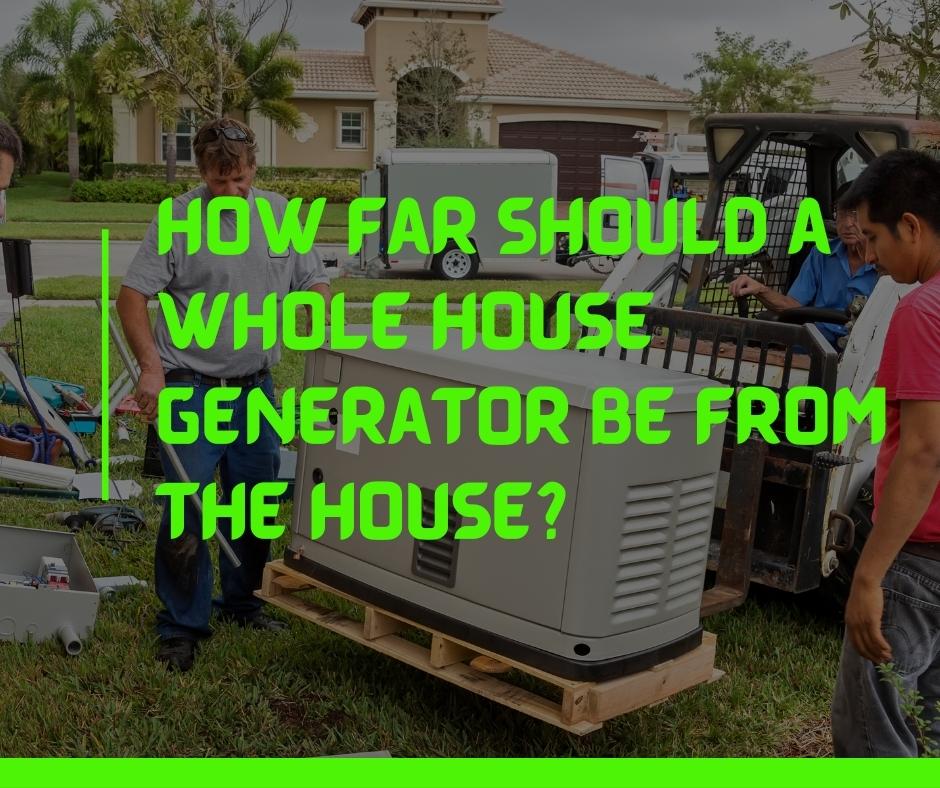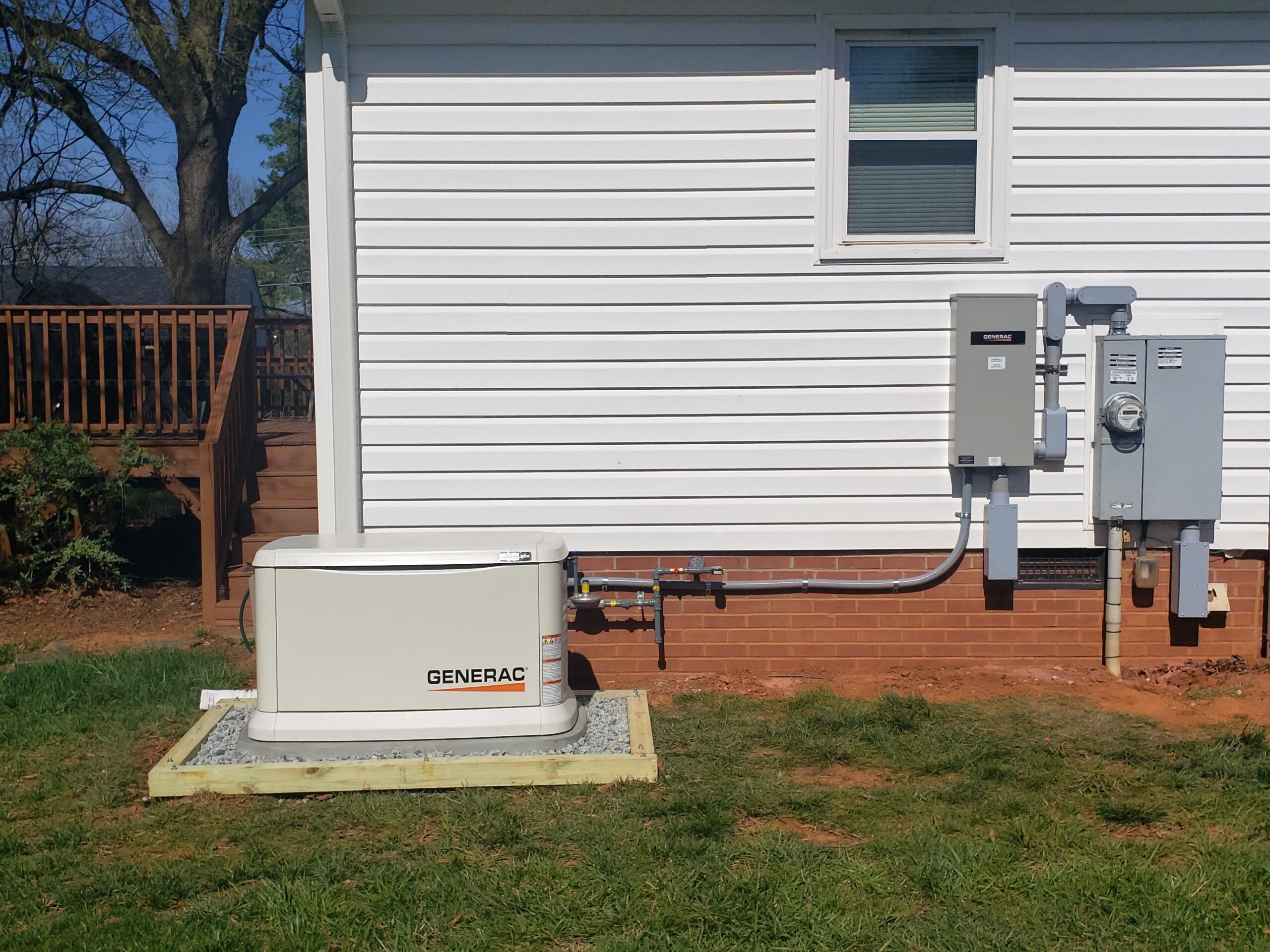Table Of Content

You can also potentially get a capital gains or energy tax credit for a generator, depending on your region. Installing a whole-house generator is a complex project that most homeowners should leave to the pros. Installation involves complicated electrical work, and when done improperly, it can damage your city’s power lines. Extreme weather events that take down power lines are often the same events that send flood water into basements or cause groundwater to rise. Extreme weather conditions like hurricanes, blizzards, heavy rain, and intense heat can tax the power grid.
Champion 14-kW aXis Home Standby Generator with 200-Amp Whole House Switch
Don't worry about having to be there to start and stop your Generac home backup generator. When budgeting for a generator, it’s helpful to consider a few factors. For instance, most whole-house generators need to sit on a concrete pad, which you’ll need to pay to install if you don’t already have one. Champion and Honda tend to offer some of the most affordable generators, while Generac generators are on the more expensive side.

National Average: $11,325 18-20KW Generator Installed
These engines turn rotors that convert mechanical energy into AC and DC electrical energy. The process is similar to a hand-cranked flashlight but on a much larger scale. Starting at $5,600, it is less expensive than the 24kW generator but still in the higher price range. That said, if positive reviews are important to you, the Guardian 20kW is a good choice. It’s designed to withstand all kinds of natural disasters and will last for years.
General Maintenance
Scott Krager purchased generatorgrid.com in the summer of 2020 and quickly began to buy every generator under the sun! He currently has over a dozen generators and the number is growing quickly. While most generators are going to offer a recoil style start, this is not always ideal for those who have trouble pulling a recoil cord. For those who want something easier to start, you can opt for an electric start generator. These generators are going to offer a push button that starts the generator instantly. You can also find generators, such as a Westinghouse, that has a keyfob programmed to allow you to start the generator from a distance.
Additional Costs and Considerations
Portable generators are convenient but often need to be manually started with a pull cord. They also require refueling every 10 to 12 hours to keep running. The Wen GN6000 portable generator is durable and powerful but not as easy to transport as some of the other portable models on this list. It could work for you if you want a dual-fuel portable generator at a more affordable price.
Generators can run on a variety of power sources, depending on the type. For instance, some generators are fueled by natural gas, while others are fueled by diesel or solar power. We have a portable 5kw stored in the garage and use it regularly during storms and power outages as needed. I use the extension cord method since its the easiest due to the location of my breaker boxes. While the price of the generator is the biggest expense, there are other factors that will determine your total standby generator installation cost.
Cost to Run the Whole House Generator
Their costs do not include transfer switches or other parts necessary for installation. A whole house or standby generator ranges from $2,000 to $20,000 on average. They sit on their own pad and are connected to a fuel source at all times.
Prime Day Generator Deals: Save Hundreds on Top Portable Models - Business Insider
Prime Day Generator Deals: Save Hundreds on Top Portable Models.
Posted: Wed, 11 Oct 2023 07:00:00 GMT [source]
Automatic Generator
That means you can use it to power multiple devices at home or supply electricity to a small or medium-sized camper. However, this generator can be prone to power surges, so it isn't recommended for sensitive electronics like LCD TVs or laptops. A licensed electrician should be able to handle the job, but be sure to budget for the installation cost when considering the cost of the generator. A home standby generator also needs professional installation but the transfer switch is generally included in the price. Portable generators are smaller than standby generators because they are often not designed to power the entire house.
Since deadly carbon monoxide is a byproduct of natural gas and propane combustion, outdoor installation is the safe choice. Generator manufacturers recommend installation at least six feet from any window or other opening such as a dryer vent or furnace air intake. Whole house generators either use liquid propane from a tank or natural gas from a utility line (or custom tank). Propane is cheaper and less contaminating, but using natural gas means you won’t have to refill a tank (although this isn’t an option if you’re looking to go off the grid). To determine how much power you’ll need for your generator, you can either use an online wattage calculator, the wattage information on your appliances or your electrical bill. We recommend multiplying the total wattage of your appliances by 1.5 to give yourself a safe margin of error.
Generac is one of the most popular and frequently installed residential standby generators. They have an incredible line of generators that can power large commercial spaces and smaller residential ones. You can easily find a generator that can power even the largest home with the heaviest power needs.
The most crucial factor to consider when determining the whole house generator cost is the power capacity of the unit. Should you purchase a generator that does not meet your power requirements, it will put unnecessary stress on the unit and even cause damage to the devices connected to it. If you paid $10,000 for the generator, then the installation cost could be $7,500, that is to say if there are no electrical upgrades required before installation. Whole house generators need to connect to your home’s existing wiring. If the wiring needs to be corrected, should installing a subpanel and re-wiring be necessary, it could cost you an additional $500-$900, depending on the electrician.
These units can cost $10,000 to $25,000, plus an additional $800 to $1,500 for installation. The generator itself can’t do its job without the appropriate fuel, usually diesel, propane, or natural gas. The daily cost to run a 21 kW generator on natural gas is about $90.
The price range for solar whole house generators is from $2,000 to $25,000. The price range for diesel-powered whole house generators is from $2,540 to $17,200. A gas line must also be installed, a job usually subcontracted to a plumber at similar hourly rates. If you use propane, a tank with 500-gallon capacity or more should be installed.
Permits usually range from $50 to $200, but make sure to check with your local authority for permit pricing and requirements. Usually, the biggest cost factor to consider is the generator itself. If a whole house generator isn't right for your needs, consider a whole house battery backup system. If the price of either is too steep for you, think about purchasing a portable gasoline generator.
I'm a licensed Home Inspector, Certified Master Inspector (CMI), and an FHA 203k Consultant. I started PickGenerators.com to help people better understand whole-house and portable generators. The cost of installation is a cost that frustrates potential buyers. How is it possible that the generator’s cost can sometimes be equal to the cost of installing it?
Unless you experience numerous power outages a year, you might not be willing to spring for the $10,000 or more it can cost to buy a home standby generator and have it installed. You can save thousands of dollars if you’re willing to pull your large inverter or portable generator out of a garage or shed and hook it up during the outage. You’ll still want to have a transfer switch installed and budget for that expense. If you have any of these and it’s essential for them to work in a power outage, be sure to have a transfer switch installed at your breaker box for a large portable or inverter generator.

No comments:
Post a Comment